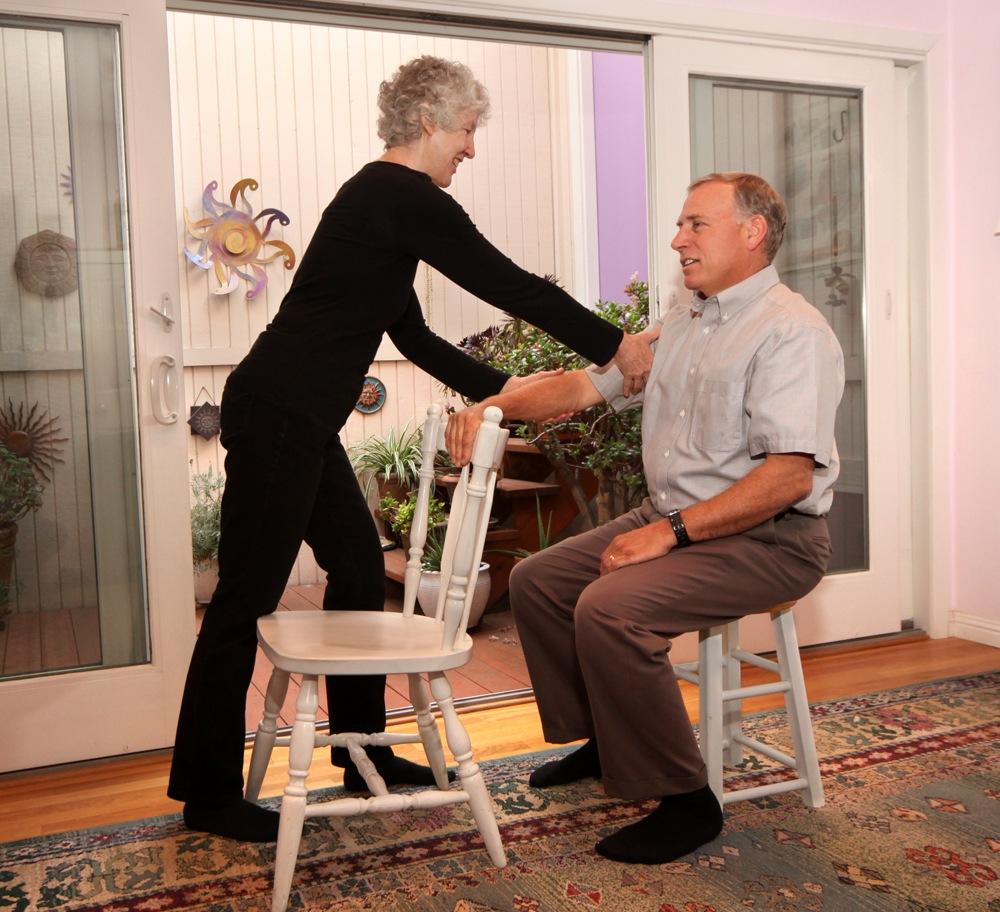What Happens During an Alexander Technique Lesson?
I’m frequently asked what a typical Alexander Technique lesson involves. While there are common elements present in every Alexander Technique lesson I teach, each lesson will be as individual as my students are. Are we talking about a first lesson or after a year of lessons or someone who has continued to take lessons over time? How old are they? Do they have a disability, injuries, Parkinson’s, or some other physical limitation? What other activities does the individual do? Do they sit at a desk all day or are they an avid runner? Regardless of the individual, the principles of the Alexander Technique are the core of what I teach. In every case, my goal is for them to learn how to move their bodies and re-educate their vision so that they can move their bodies easily, according to the way our bodies are designed to move. Over time, this means less pain, more energy, a slowing of degenerative conditions, and a better quality of life.
Teaching the Alexander Technique is an art that I began studying in 1985, completing my training in 1996. While I always incorporate the principles of the Alexander Technique, my teaching has developed over the years to match my individual style. Each Alexander teacher will differ in their approach, while maintaining the same core principles, so that an Alexander lesson I teach will differ from another Alexander teacher.
Alexander lessons are just that—lessons in how to think and move the body, rather than passive treatments such as massage or energy work. Each lesson is a one-hour, one-on-one session, ideally once a week, but each person has individual needs and resources, so some may attend less often. The student is clothed, and I usually begin by having them lie down on either the floor or a massage table. Using hands-on techniques to lengthen and widen the muscles, I take their muscles to their full length and width, but not stretching them as in yoga. The goal is for my student to feel what it’s like to be aligned and coordinated. Depending on each student’s readiness to be taken to their fully extended structure, I may be able to do this right away or may be something we’ll continue to work on over time.
Once a student feels what it’s like to be aligned, I have them move through different postures, guiding their bodies and talking them through the principles of movement they are working to understand and then incorporate into their daily lives. We move to the floor, up from the floor to a stool, to a chair, walking, walking up and down stairs, and perhaps back to the stool or floor, always working on the correct positions and body movements as they transition from one location to the next. Eventually we work on squatting.  My students range from children through adulthood. Children are particularly receptive to this teaching. One of the things we sometimes do is called flying, which they love. It imitates early developmental reflexes but in a standing position where they get to work with their feet movements and eventually go from the feet to jumping into the air. I assist their jumps so that it feels like flying where they get some height. (I don’t do this with my adult students.)
My students range from children through adulthood. Children are particularly receptive to this teaching. One of the things we sometimes do is called flying, which they love. It imitates early developmental reflexes but in a standing position where they get to work with their feet movements and eventually go from the feet to jumping into the air. I assist their jumps so that it feels like flying where they get some height. (I don’t do this with my adult students.)
One of my additions to teaching this technique is incorporating the visual pathway as it relates to body movement. I studied with Peter Grunwald, a natural vision teacher and Alexander Teacher, and use some of his teaching in my lessons. The eyes initiate and lead our movements, so I teach my students how to utilize this knowledge in their movements and continue helping them coordinate their eyes with their movements throughout the entire lesson.
Through my studies of early developmental movement with Svetlana Masgutova, Ph.D. and the Dart Procedures with Marie Stroud, I often take people to the floor imitating the way babies move, which is how babies’ brains and vision develop. This often involves rocking, rolling, creeping, crawling, crossover movements, and so forth, mimicking the way babies develop so my students learn and integrate the optimum way their own bodies are designed to work.
Over time, the lessons help my students regain the bodies they have lost and improve their vision, allowing them to move easily, without pain, and with less wear and tear. This “fountain of youth” is what constitutes real health.
This email address is being protected from spambots. You need JavaScript enabled to view it.for more information or to schedule a lesson.

